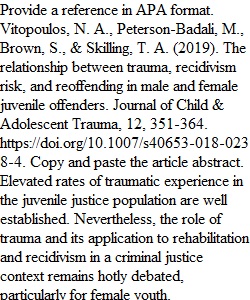


Q This exercise can help you further prepare for writing your literature review. Choose one of the of the 5 empirical articles that you have identified as your sources in Exercise 12b. Read the article carefully and then write your answers to the following questions about the study: 1. 1. Provide a reference in APA format. 2. Copy and paste the article abstract. 3. What is the main research question that the study is intended to answer? 4. How did the authors select the participants (sample)? What group of people (population category) do the participants seem to represent? Explain. 5. How did the authors define and measure key concepts/variables? Does this way of measuring them seem reasonable to you? Explain. 6. What are the main findings/results of the study? 7. What are the main limitations of the study? 8. Considering the limitations, can we still trust the study results? Explain. 9. What population can we generalize the results to (outside of the sample used for the study)? Explain. 10. What still remains unknown on the topic (directions for future research)? For this exercise, you only need to analyze 1 (one!) of the 5 studies you have selected for your literature review. But to help you make your research writing more effective, make sure to analyze each of the remaining 4 empirical studies this way, before you start writing your literature review. Trust me, it will help you write a better paper!
View Related Questions